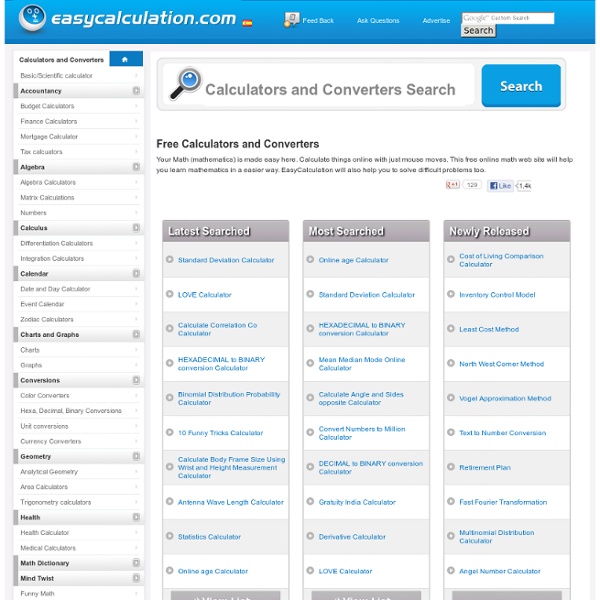



Flash Earth - Zoom into satellite and aerial imagery of the Earth in Flash Online Conversion - Convert just about anything to anything else the free encyclopedia Circle A circle can be defined as the curve traced out by a point that moves so that its distance from a given point is constant. Terminology[edit] History[edit] Circular piece of silk with Mongol images The circle has been known since before the beginning of recorded history. Early science, particularly geometry and astrology and astronomy, was connected to the divine for most medieval scholars, and many believed that there was something intrinsically "divine" or "perfect" that could be found in circles.[2][3] Some highlights in the history of the circle are: 1700 BCE – The Rhind papyrus gives a method to find the area of a circular field. 300 BCE – Book 3 of Euclid's Elements deals with the properties of circles.In Plato's Seventh Letter there is a detailed definition and explanation of the circle. Analytic results[edit] Length of circumference[edit] The ratio of a circle's circumference to its diameter is π (pi), an irrational constant approximately equal to 3.141592654. Area enclosed[edit] . or
8 Historic Symbols That Mean The Opposite of What You Think Misunderstood By: Libertarians, Glenn Beck. Glenn Beck has recently found a soul mate in Thomas Paine, the Founding Father known for his Revolutionary War tract Common Sense. Libertarians and tea partiers are so enamored by their new ideological BFF that they've taken to dressing up like him on YouTube and spouting off about the evils of taxation, weak foreign policy and too many brown people. But Beck and his minions could probably benefit from actually reading some Thomas Paine. "Pay as a remission of taxes to every poor family, out of the surplus taxes, and in room of poor-rates, four pounds a year for every child under fourteen years of age." Huh, that sounds like the child tax credit created under the Balanced Budget Act of 1997, signed by. . . An entitlement paying old people to support them for not working?
triangles A plane triangle is an object having 3 straight sides in 2-dimensional space. (Triangles in other spaces, for example spherical triangles, are not treated here.) Triangles have 3 sides, 3 vertices (the points where the sides meet), and 3 angles. <p class="scriptwarn">The calculator below uses JavaScript, and so it will not work for you. Triangle calculators If the sizes of three of the six parts (3 angles and 3 sides) of a triangle are known, and at least one of the known parts is a side, the sizes of the other sides and angles can be calculated. In what follows, the sides are named with lowercase letters, and the angle opposite a side is named by the same letter, but in uppercase. Equations about triangles For the equations below, the angles are named with the Greek letters alpha (α), beta (β) and gamma (γ). The Law of Sines The Cosine Law The Law of Tangents Area The area can also be calculated from the lengths of the three sides alone (Heron's formula). The inscribed circle c2 = a2 + b2
Definition of Transcendentalist Definition: A Transcendentalist was a follower of an American philosophical movement known as Transcendentalism which emphasized the importance of the individual and was a break from more formalized religions. Transcendentalism flourished from roughly the mid-1830s to the 1860s, and was often viewed as a move toward the spiritual, and thus a break from the increasing materialism of American society at the time. The leading figure of Transcendentalism was the writer and public speaker Ralph Waldo Emerson, who had been a Unitarian minister. The publication of Emerson’s classic essay “Nature” in September 1836 is often cited as a pivotal event, as the essay expressed some of the central ideas of Transcendentalism. Other figures associated with Transcendentalism include Henry David Thoreau, author of Walden, and Margaret Fuller, an early feminist writer and editor. Transcendentalism was and is difficult to categorize, as it could be viewed as a: Also Known As: New England Transcendentalists